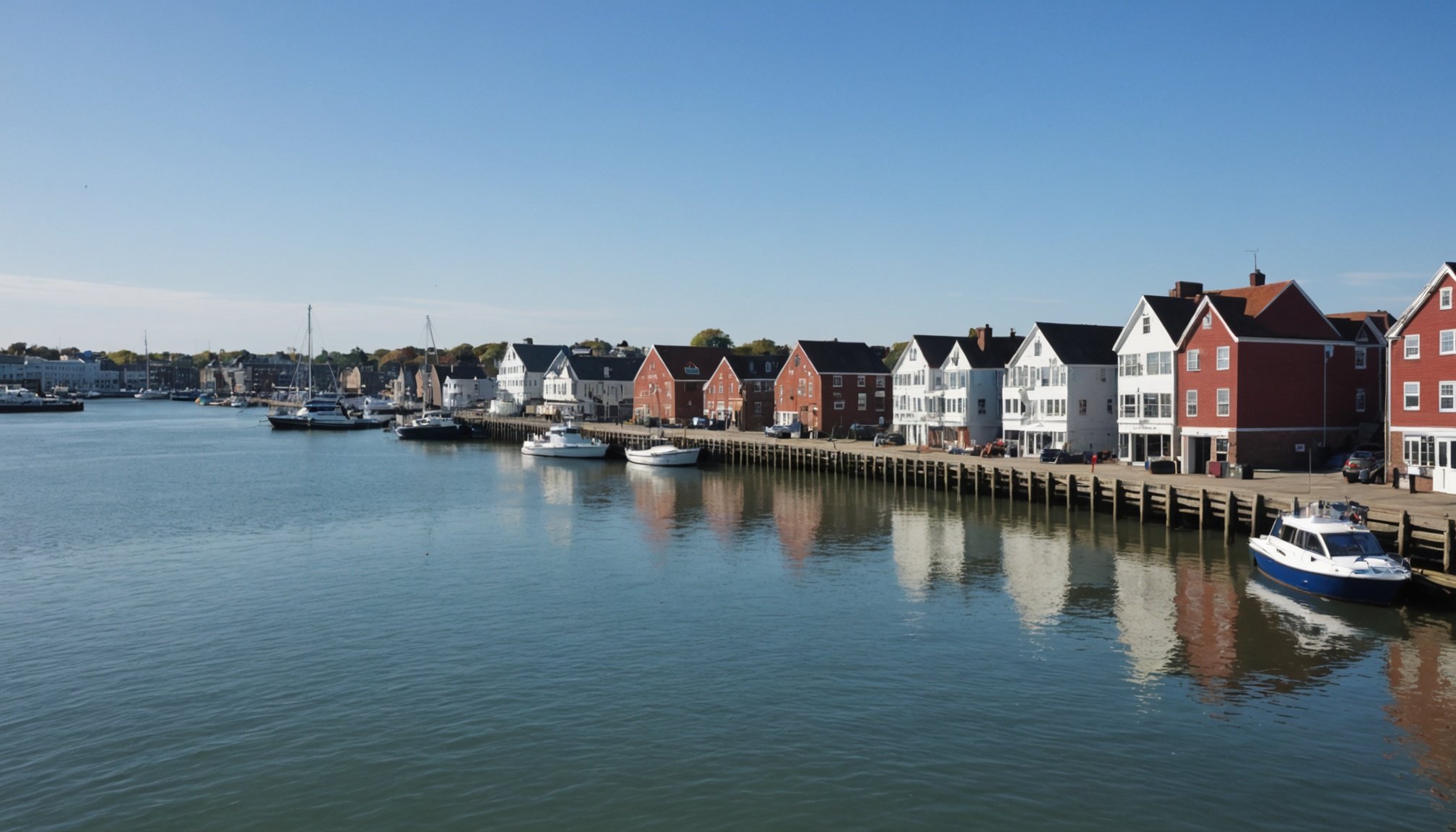Overview of Portsmouth’s Waterfront Properties
Portsmouth waterfront properties are capturing the interest of investors and real estate enthusiasts alike. Investment opportunities in this dynamic market are abundant, but it’s crucial to understand its current state. The real estate market for waterfront properties in Portsmouth is thriving due to high demand and limited availability, making it a competitive and potentially lucrative environment for buyers.
Key features of Portsmouth waterfront properties include breathtaking views, direct access to water, and proximity to local amenities such as parks, restaurants, and cultural venues. These attributes not only enhance the living experience but also contribute to the strong appeal for renters and tourists, thereby boosting potential returns on investment.
En parallèle : Mastering Planning Permissions: Your Guide to Building an Extension in Oxford
When comparing waterfront properties to inland options, several advantages emerge. Waterfront properties often appreciate faster due to their scarcity and unique allure. They also offer superior lifestyle benefits, such as recreational activities, which can justify higher rental and sales prices. Therefore, for investors seeking a blend of aesthetic appeal and financial gain, Portsmouth waterfront properties represent a compelling choice within the real estate market.
Impact of Rising Sea Levels on Waterfront Properties
As rising sea levels become an undeniable reality due to climate change effects, waterfront properties face increasingly significant challenges. Scientific projections indicate that Portsmouth is one of the areas likely to be affected by these environmental changes. Various studies project an average sea level rise, which could have profound implications for coastal communities.
A lire également : Discover the Benefits of Investing in Multi-Family Homes in Portsmouth
The potential risks associated with these environmental changes are extensive. One major concern is the increased frequency and intensity of flooding. Properties that are close to the shore are particularly vulnerable to the damaging effects of storm surges and erosions, which are expected to worsen as sea levels continue to rise.
In terms of long-term implications, the impact on property values is compelling. As property insurance becomes costlier, and as potential flooding becomes a regular threat, the appeal of investing in waterfront properties might decrease. This decrease could influence investment security and reshape the real estate market in coastal areas. Understanding these vulnerabilities allows property owners and future investors to make informed decisions about investments in waterfront properties.
Market Trends and Future Property Values
Understanding market trends in Portsmouth’s real estate is crucial for potential buyers and investors. Historically, waterfront properties have seen a steady increase in property value appreciation due to their location appeal. Recently, however, fluctuations in market cycles have introduced new dynamics. These market cycles are influenced by changing buyer demographics, including a higher demand from younger, environmentally-conscious buyers.
Real estate forecasts suggest that this trend will continue as long as sustainable practices are incorporated into property development. Experts predict that climate change will impact future property valuations. Areas susceptible to sea-level rise might witness a decline, while those investing in resilient infrastructure could see property values increase. Buyers should be aware of such potential impacts when considering investments, as understanding these trends can guide informed decisions.
Additionally, as demographics shift, so do preferences in property types and locations. Keeping an eye on these evolving buyer demographics will enable more strategic investments targeting high-demand features, further ensuring property value appreciation. Adapting to these changes in the market will allow buyers and investors to stay ahead and maximise their returns amidst these dynamic conditions.
Local Government Initiatives and Policies
Local government initiatives play a crucial role in coastal management, especially concerning waterfront property development. Many municipalities have established specific zoning laws that dictate what can and cannot be built in coastal areas. These laws often aim to preserve natural habitats, prevent erosion, and ensure that construction is sustainable and resilient against climate events.
Local governments also implement programs and incentives that encourage sustainable building practices. These initiatives often include subsidies for developers who adhere to green building standards or tax breaks for properties that use renewable energy sources. By providing financial incentives, local authorities aim to promote long-term environmental sustainability and resilience within their communities.
Another critical aspect is community engagement. Local governments actively collaborate with residents and stakeholders to enhance resilience planning. Initiatives often involve public forums, workshops, and partnerships with local organizations to ensure that all voices are heard and considered in decision-making processes. This collaborative approach not only improves policy effectiveness but also fosters a sense of community ownership and collective responsibility in safeguarding coastal areas.
Mitigation Strategies for Investors
Mitigating flood risks is crucial for investors in waterfront properties. Architectural and landscaping modifications play a significant role in enhancing flood resilience. Changes such as elevated structures, water-retaining gardens, and strategic land grading can prevent damage. Using flood-resistant building materials also strengthens property protection.
Insurance is another effective mitigation strategy. Specialised flood insurance policies provide coverage for water damage, ensuring financial stability post-disaster. Investors should explore these options to safeguard their assets. Additionally, government resources and grants for property protection are invaluable. These programs often offer financial aid for implementing flood resilience measures.
One inspiring example comes from Portsmouth waterfront properties, where successful mitigation actions have been implemented. Several properties have transformed their flood resilience, using a combination of innovative landscape designs and enhanced building techniques. These case studies demonstrate the effectiveness of investing in mitigation strategies, offering both protection and potential long-term savings for investors.
Lastly, integrating multiple mitigation strategies ensures optimal property protection. By combining architectural adjustments, insurance, and government support, investors can significantly minimise flood risks and enhance the lifespan and value of their properties.
Expert Opinions and Case Studies
When contemplating waterfront properties, insights from expert analysis can illuminate the myriad factors impacting investment decisions. Real estate professionals and environmental scientists offer a wealth of knowledge, guiding potential investors through both opportunities and pitfalls.
Consider investment case studies that showcase real-life examples of success and challenge. For instance, in shrinking markets, strategic acquisitions have led to substantial returns, even where general sentiments were pessimistic. In one notable scenario, expert foresight into urban redevelopment prompted a lucrative purchase, proving the value of an informed approach.
However, not all investments end in triumph. Cases of failed investments underscore the importance of due diligence. A notable example involved oversight of tidal influences, resulting in diminished property value. Such instances emphasize the need for accurate environmental assessments and real-life examples of careful planning.
Interviews and quotes from seasoned investors illustrate that understanding local market dynamics and environmental factors can transform a risk into an opportunity. Their stories serve as valuable guides, affirming that knowledge is key to navigating the intricate landscape of waterfront property investment.











